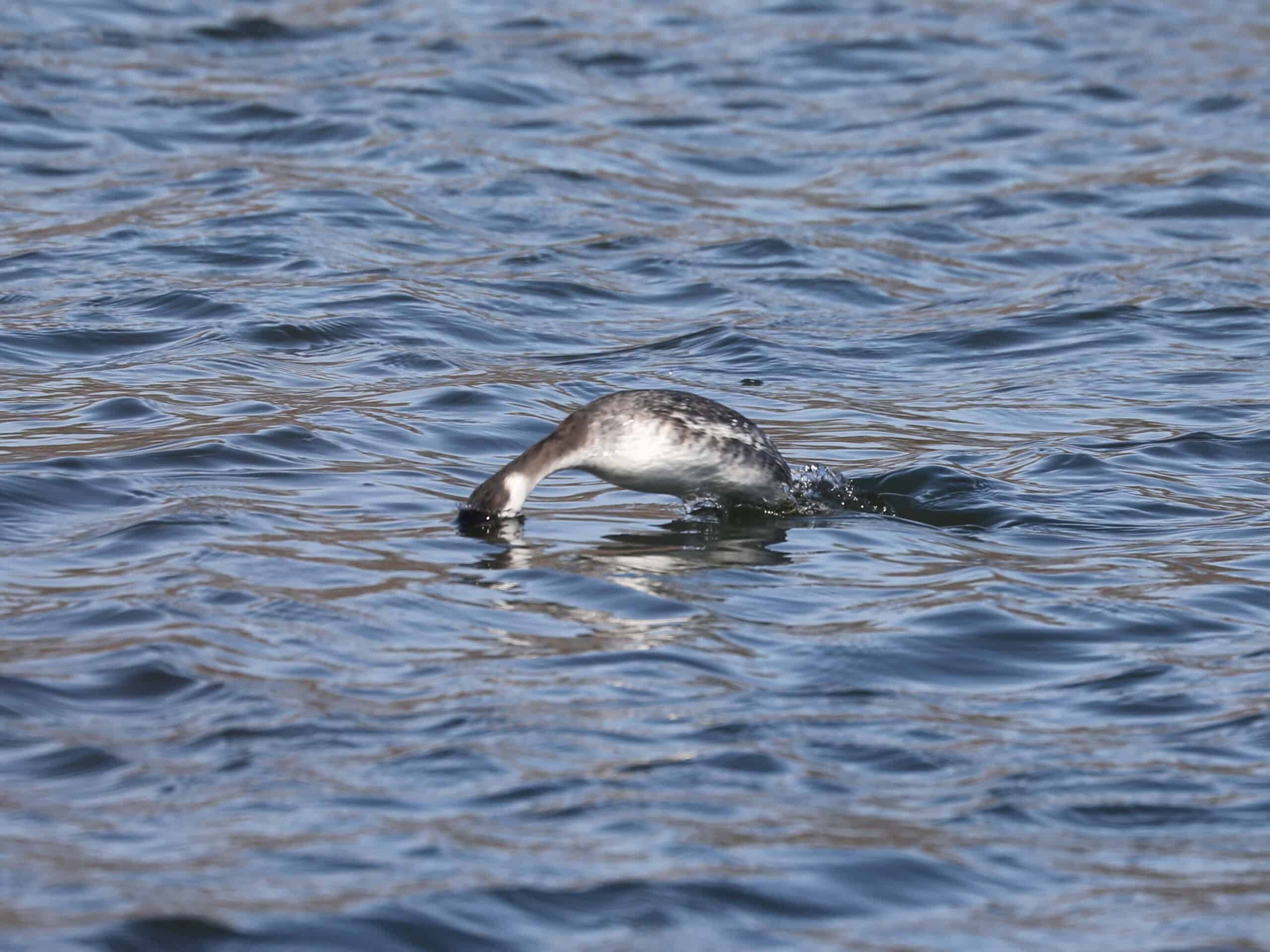Water Witch: Horned Grebe
The third week of March is the peak of migration for Horned Grebes in the Susquehanna Valley. They’re on their way north from their winter range along the coasts of the Atlantic Ocean and the Gulf of Mexico, as well as on major rivers in the southeastern United States. They will nest in marshes and small ponds far to the northwest, mostly in Canada and Alaska. Horned Grebes are also common across most of Asia and Europe.
Horned Grebes have lots of cool nicknames, including Devil-Diver, Hell-Diver, and Water Witch, for their ability to quickly drop under the surface of the water. The Water Witch nickname may also be related to their blood-red eyes and wailing calls. However, I’ve never heard a Horned Grebe call during more than three decades of birding. They are almost always silent while they’re here in Pennsylvania – they usually only vocalize near their nests up north. The official name of Horned Grebe refers to yellow tufts of feathers that grow on the sides of the head. The grebe in my photos is in its winter plumage, so it doesn’t yet show those distinctive yellow feathers.
Grebes are remarkably well adapted for life on the water. They eat, sleep, and mate on the water, build floating nests, and carry their young on their backs as they swim. They feed by quickly diving under the water to capture fish. A Horned Grebe can be undewater for as long as three minutes at a time (although usually they’re only under for a minute or less), and can move several hundred feet before breaking the surface. To help propel them through the water, their legs are positioned so far back on their bodies that they can’t stand or walk upright on land. In fact, the scientific genus name for this species, Podiceps, is based on the Latin words for “buttocks-foot.”
Water Witch: Horned Grebe
The third week of March is the peak of migration for Horned Grebes in the Susquehanna Valley. They’re on their way north from their winter range along the coasts of the Atlantic Ocean and the Gulf of Mexico, as well as on major rivers in the southeastern United States. They will nest in marshes and small ponds far to the northwest, mostly in Canada and Alaska. Horned Grebes are also common across most of Asia and Europe.
Horned Grebes have lots of cool nicknames, including Devil-Diver, Hell-Diver, and Water Witch, for their ability to quickly drop under the surface of the water. The Water Witch nickname may also be related to their blood-red eyes and wailing calls. However, I’ve never heard a Horned Grebe call during more than three decades of birding. They are almost always silent while they’re here in Pennsylvania – they usually only vocalize near their nests up north. The official name of Horned Grebe refers to yellow tufts of feathers that grow on the sides of the head. The grebe in my photos is in its winter plumage, so it doesn’t yet show those distinctive yellow feathers.
Grebes are remarkably well adapted for life on the water. They eat, sleep, and mate on the water, build floating nests, and carry their young on their backs as they swim. They feed by quickly diving under the water to capture fish. A Horned Grebe can be undewater for as long as three minutes at a time (although usually they’re only under for a minute or less), and can move several hundred feet before breaking the surface. To help propel them through the water, their legs are positioned so far back on their bodies that they can’t stand or walk upright on land. In fact, the scientific genus name for this species, Podiceps, is based on the Latin words for “buttocks-foot.”
About The Author
Dan Hinnebusch is the Ornithologist for Wild Birds Unlimited. Click to learn more.





